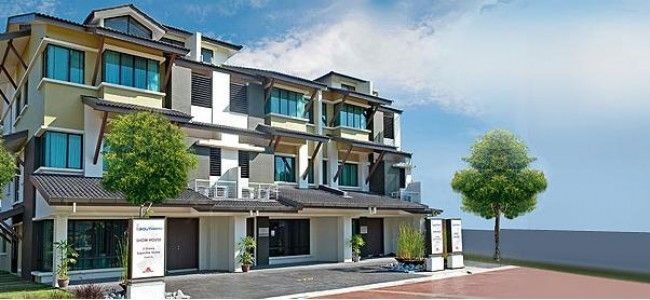News & Articles Penang residential market seen to slowdown in 2H15
Penang residential market seen to slowdown in 2H15
9 Feb 2015

The transaction volume of Penang’s residential market is likely to slow down in the second half of this year (2H15), amid cautious buying ahead of implementation of the goods and services tax (GST), said a property consultant.
According to PA International Property Consultants (Penang) Sdn Bhd, the transaction volume is likely to decrease 5% to 10%, but prices would be maintained.
Executive director Loo Choo Beng said market players are expecting a between 3% and 4% increase in property prices following the 6% GST in April.
He added that properties in the secondary market and affordable segment would be an alternative for buyers.
“The general demand for properties is still there. But purchasers are facing problems in securing loans,†he told a media briefing on the Penang Property Market 2015 here today.
Loo said lower prices in the secondary market could pose a threat to new property sales.
“A rush to buying secondary market properties is likely ahead of implementation of the GST
“The residential property price trend for new launches in Penang will remain stable instead of rising, due to a wait and see attitude, over the impact of the GST. This is alongside more affordable projects to be launched this year,†he added.
He said more property developers are expected to divert their products to the mainland and offer affordable homes with lifestyle facilities going forward to cater for growing demand.
On Penang’s commercial market, Loo said the market is likely to consolidate amid less supply entering the market since the 1997/98 recession, and there is potential for rental growth as current rates are relatively low.
“Prices for commercial shops at prime areas will continue to increase, and that in secondary areas, maintained. Rentals remain stable with a yield compression of about 4% to 8%,†he added.
On Penang’s industrial market, Loo said the state government should open up new industrial zones at Seberang Perai Utara, Tengah and Selatan with the lag in supply growth and limited supply underlining potential prices.
According to PA International Property Consultants (Penang) Sdn Bhd, the transaction volume is likely to decrease 5% to 10%, but prices would be maintained.
Executive director Loo Choo Beng said market players are expecting a between 3% and 4% increase in property prices following the 6% GST in April.
He added that properties in the secondary market and affordable segment would be an alternative for buyers.
“The general demand for properties is still there. But purchasers are facing problems in securing loans,†he told a media briefing on the Penang Property Market 2015 here today.
Loo said lower prices in the secondary market could pose a threat to new property sales.
“A rush to buying secondary market properties is likely ahead of implementation of the GST
“The residential property price trend for new launches in Penang will remain stable instead of rising, due to a wait and see attitude, over the impact of the GST. This is alongside more affordable projects to be launched this year,†he added.
He said more property developers are expected to divert their products to the mainland and offer affordable homes with lifestyle facilities going forward to cater for growing demand.
On Penang’s commercial market, Loo said the market is likely to consolidate amid less supply entering the market since the 1997/98 recession, and there is potential for rental growth as current rates are relatively low.
“Prices for commercial shops at prime areas will continue to increase, and that in secondary areas, maintained. Rentals remain stable with a yield compression of about 4% to 8%,†he added.
On Penang’s industrial market, Loo said the state government should open up new industrial zones at Seberang Perai Utara, Tengah and Selatan with the lag in supply growth and limited supply underlining potential prices.
Source: Kinibiz
Latest Posts
-
November Auction Carnival 2025 Returns — Nearly 600 Properties Up for Grabs!
-
SkyWorld raih emas pertama di Anugerah ESG The Edge Malaysia 2025
-
NCM Co Celebrates 38 Years of Auction Excellence with 8 Hours of Non-Stop Property and Vehicle Bidding at the July Auction Carnival 2025
-
Celebrating 38 Years of Auction Excellence with Over 700 Units Up for Grabs at July Auction Carnival 2025
-
Strata Sense: Demystifying strata living